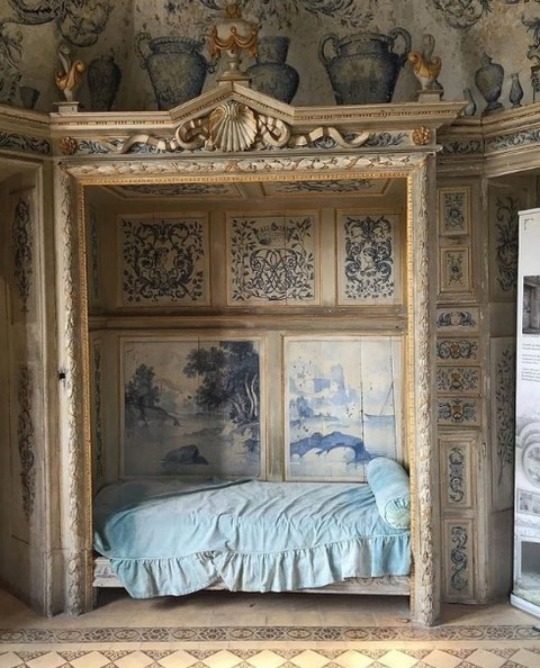#royal institution
Text

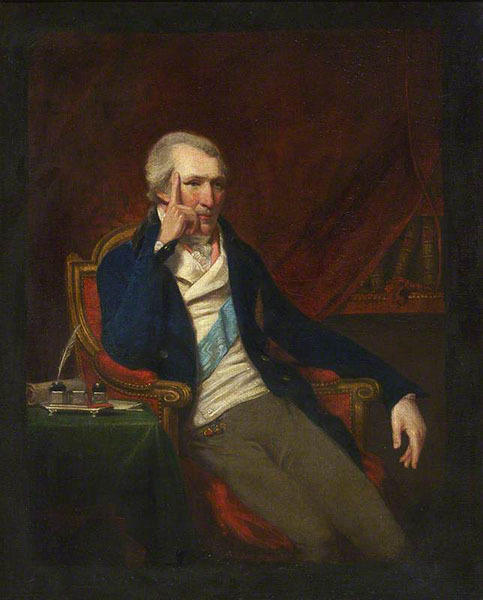

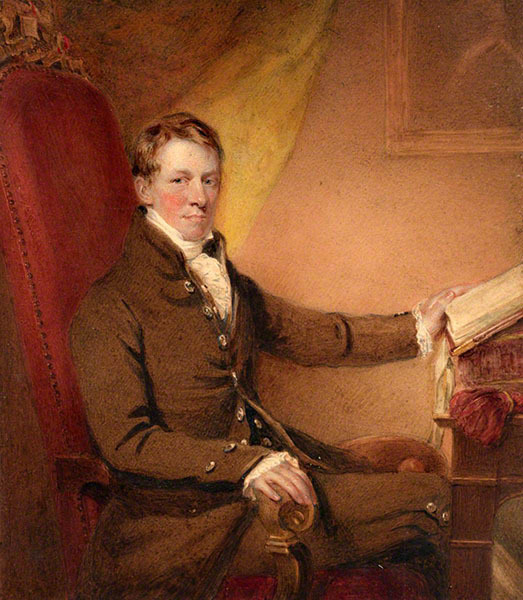



Royal Institution of Great Britain – Scientist of the Day
The Royal Institution of Great Britain (usually called the RI) was founded Mar. 7, 1799, at the home of Sir Joseph Banks, the President of the Royal Society.
read more...
#Royal Institution#popular science histsci#histSTM#19th century#history of science#Ashworth#Scientist of the Day
16 notes
·
View notes
Text
youtube
The other end of a black hole – with James Beacham, June 16, 2022
What would happen if you fell into a black hole? Join James Beacham, particle physicist at the Large Hadron Collider at CERN, as he explores what happens when the fabric of reality – physical or societal – gets twisted beyond recognition.
Watch the Q&A with James here: https://youtu.be/Q37oEB4bNSI
Subscribe for regular science videos: http://bit.ly/RiSubscRibe
James Beacham searches for answers to the biggest open questions of physics using the largest experiment ever, the Large Hadron Collider at CERN. He hunts for dark matter, gravitons, quantum black holes, and dark photons as a member of the ATLAS collaboration, one of the teams that discovered the Higgs boson in 2012. In addition to his research, he is a frequent keynote speaker about science, innovation, the future of technology, and art at events and venues around the world, including the American Museum of Natural History, the Royal Institution, SXSW, and the BBC, as well as private events for companies and corporations, including KPMG, Bain, Dept Agency, and many others. This talk was recorded at the Royal Institution on 28 October 2021.
The Royal Institution
#James Beacham#royal institution#science#relevant#astronomy#astrophysics#black hole#CERN#Large Hadro Collider#cosmology#perception#general relativity#quantum mechanics#technology#futurism#Youtube
15 notes
·
View notes
Text
Offences Against Royal Institution Must Be Taken Seriously NOW: Police
Offences against the Royal Institution must be taken seriously if not all the royals will be the target of slander. This was said by Inspector General of Police, Razarudin Husain yesterday.
Royal Institution
He adds that the case facing the Kedah caretaker MB, Muhammad Sanusi Md Nor, is different compared to other leaders because it involves royalties. The Sanusi case involved the Yang…

View On WordPress
0 notes
Text




Frog Prince au, based on a short conversation I had with some folks 🐸👑
#tma#the magnus archives#the magnus institute#the magnus pod#the magnus archive fanart#tma art#tma fanart#magpod#magnus pod#jonathan sims#jon sims#martin blackwood#jmart#jonmartin#jonmartin fanart#fairytale au#royal au#tma au#frog prince#frog prince au#clairebear art
2K notes
·
View notes
Text
If you think Wille giving up the crown and freeing himself means he will continue to have no interests or hobbies or goals outside of being with Simon then you missed the entire point of the ending.
Wille was never given the luxury of choosing his own hobbies or his own interests because he always did what was expected of him. He was forced to take music lessons as a kid. He joined the rowing team because that’s what his brother did. He partook in royal duties in season 3 because he felt like he had to. He has no idea what he likes or what he wants to do because his life was always planned out for him, even more so when he became the crown prince.
When he frees himself from the expectations of the crown and his family at the end, he’s now free to figure out what he likes, what he wants to do, where he wants to go. The world is finally his oyster. He’s fucking 17-years-old. He has all the time in the world to figure it out. I didn’t have the pressure of the monarchy and I had literally zero clue what I wanted to do. Wille has all the time in the world to figure it out. He doesn’t have any practical skills, but he’s also literally 17-years-old. In what world does even a regular, everyday 17-year-old have any or all that are needed? I personally didn’t even get a job until I was 19 and didn’t enter my current career until I was 26. He has time.
By choosing himself, Wille also chooses Simon, because Simon is and always will be a part of him, but that doesn’t mean Simon will continue to be the only thing in his life. The ending of the series is also the beginning of a new chapter in Wille’s life - where everything is unwritten and the possibilities are endless.
#young royals#yr#Wilhelm#wilmon#seriously the amount of bs I’ve seen about Wille having no life skills to exist outside the institution he was born into is so absurd#he’s literally a kid
546 notes
·
View notes
Text
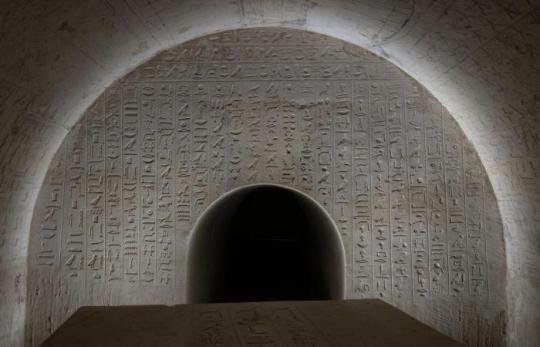
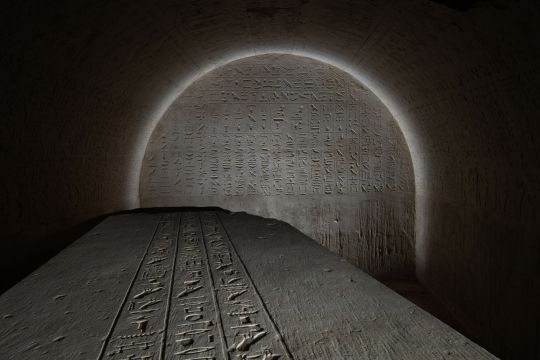
The Tomb of a Royal Scribe Discovered in Egypt
Czech experts have made another important discovery in the Egyptian archaeological site in Abusir. They found the hitherto unexplored tomb of the royal scribe Dzhehutiemhat, which is richly decorated in the form of many hieroglyphic texts and images. They mainly consist of ritual and religious texts, which were supposed to ensure the soul of the deceased an eternal life in the next world.
In April and May of this year, another part of field research by Czech Egyptologists regarding shaft tombs from the middle of the first millennium BC took place in Abusir, Egypt. It was here that the archaeological team of the Czech Institute of Egyptology of the Faculty of Arts of Charles University discovered the tomb of a hitherto unknown dignitary from the time of the Persian invasion of Egypt.
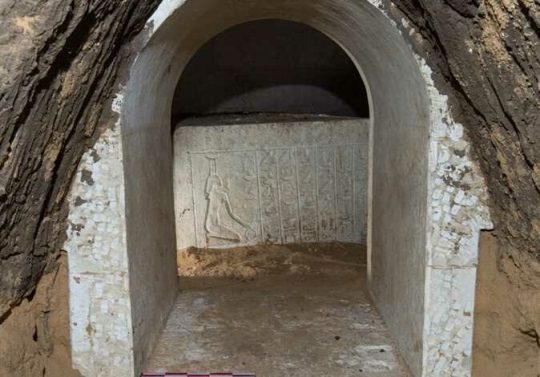

“It is a richly decorated shaft tomb of medium size, whose owner, a certain Džehutiemhat, held the office of royal scribe,” explains Ladislav Bareš, who has been coordinating the research of Abusir shaft tombs for a long time.
From the tomb, the above-ground part of which was destroyed already in ancient times, only the main shaft was preserved, at the bottom of which lay a burial chamber made of limestone blocks at a depth of 14 meters. Access to it was provided by a small, more northerly shaft and a narrow corridor approximately three meters long connecting the access shaft with the burial chamber.
For reasons still unknown, this access shaft was largely filled with several dozen decorated limestone blocks, originating from the dismantled above-ground part of the nearby majestic tomb of General Menechibnekon.

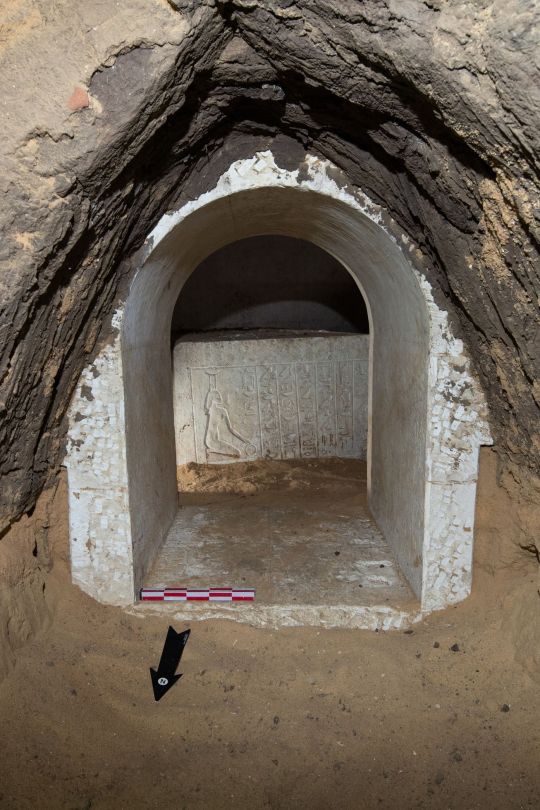
A tomb with rich decoration
The burial chamber is richly decorated with texts and other scenes. A long sequence of incantations against snakebite from the Pyramid Texts covers the north entrance wall. Interestingly, the snakes mentioned in these magical texts represented a potential danger, but could also serve as powerful protectors of the deceased and his mummy.
“While the entrance to the nearby Menechibnekon’s burial chamber was protected by the guardians of the gates of the 144th chapter of the Book of the Dead, in the case of Džehutiemhat, snakes from the Pyramid Texts play this role,” adds Renata Landgráfová, director of the Institute of Egyptology and an expert on the ancient Egyptian language and texts.
The south and west walls are covered with a sacrificial ritual and an extensive sacrificial list. On the ceiling of the burial chamber are depictions of the journey of the sun god Reo through the sky, first in the morning and then in the evening celestial bar. The depictions are accompanied by hymns to the rising and setting sun.
Inside the burial chamber covered with relief decoration is a large stone sarcophagus, which also bears hieroglyphic inscriptions and depictions of gods, both outside and inside. The lid is decorated with texts taken from the Book of the Dead, but also excerpts from the much older Pyramid Texts, which partially repeat sayings that also appear on the walls of the burial chamber.
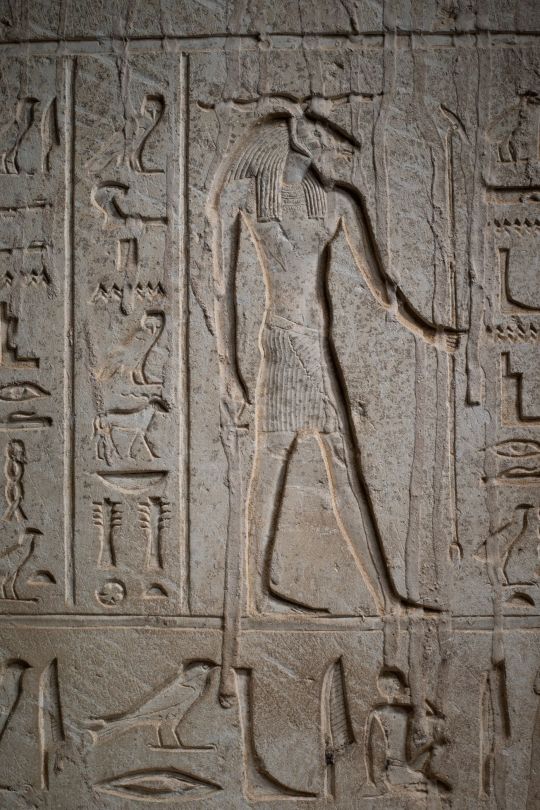
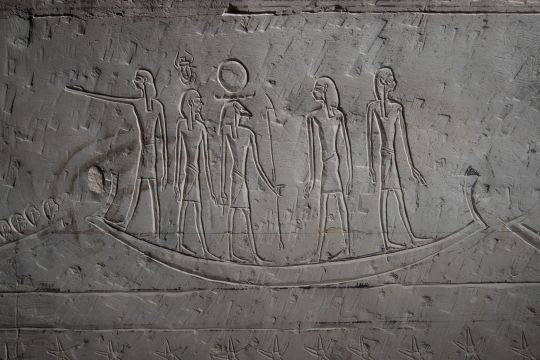
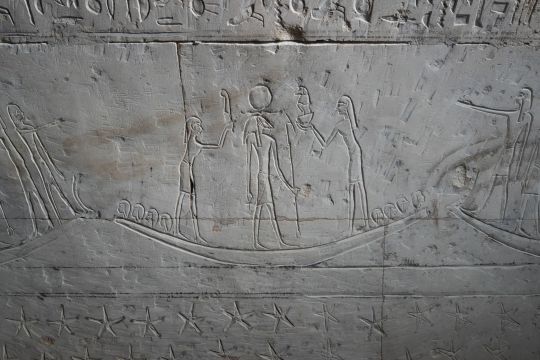
Ritual texts for eternal life
On the bottom of the inner wall of the sarcophagus bath, the goddess of the west, Imentet, is depicted, and its inner sides bear the so-called canopic sayings, spoken by this goddess and the earth god Geb. “The goddess of the west inside the sarcophagus represents the protector, guide and symbolic mother of the deceased,” explains Jiří Janák, who analyzes and interprets religious and magical texts as part of field research.
All the mentioned spiritual-ritual texts were supposed to ensure the deceased a smooth entry into a blissful and well-secured eternal life in the afterlife.
The tomb of the scribe Dzhehutiemhat was discovered almost empty, as it was robbed probably already in the 5th century AD, similar to other tombs in this burial ground.
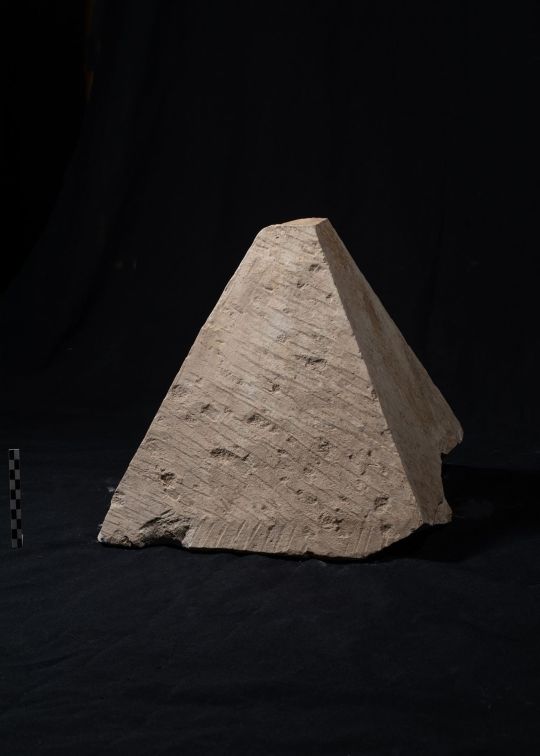
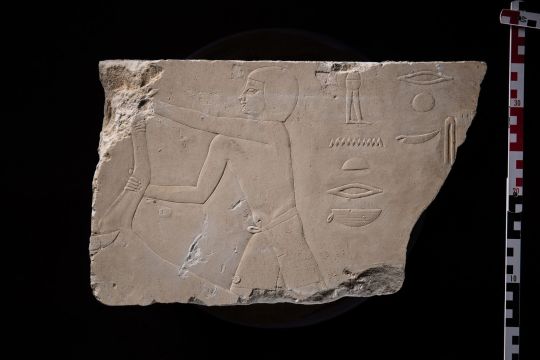

The deceased suffered from sedentary work
From the anthropological analysis of the skeletal remains, which was carried out by leading Egyptian experts, it was found that Dzhehutiemhat died at a relatively early age of around 25 years, he bore the signs of a kind of occupational disease (wear and tear of the spine during sedentary work) and suffered from severe osteoporosis, i.e. thinning of the bones.
The latter fact could place him in the family of other inhabitants of the Abusir shaft tomb burial, in whom the disease was also confirmed, such as the famous Iufaa, the owner of a nearby much larger tomb, whose unlooted burial chamber was discovered in 1996.
It is therefore possible that most of the owners of the tombs buried in this part of the Abusir necropolis belonged to one extended family, firmly anchored in the military elite of late Saiyan Egypt. However, Dzhehutiemhat’s mother probably came from completely different circles and a different part of Egypt at that time. Her two names can be translated as “Nubian” and “Fox”, while the latter is written in an unusual, most likely Berber form.
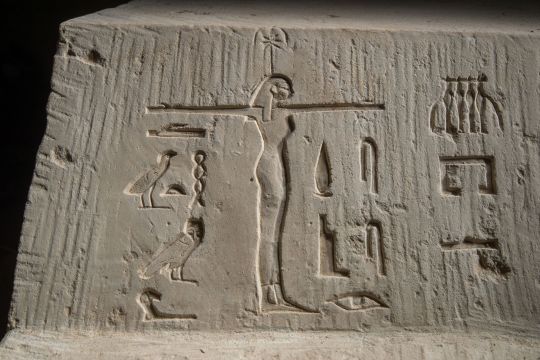
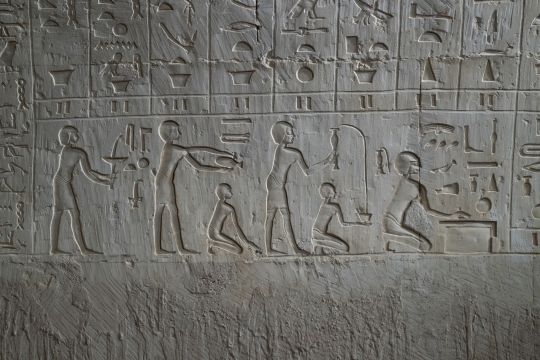
They also found a collection of pottery in the tomb. “The discovery of a large fragment of a Chian amphora with a perfectly smoothed edge is also very interesting, because the ancient looters probably used it as a shovel,” says Květa Smoláriková, who is an expert on Egyptian ceramics and Greek imports in the Czech team.
“The recently discovered tomb of the dignitary Džehutiemhat on the Abusír archaeological concession is the latest piece of knowledge in the mosaic of the history of ancient Egypt at the end of its glory in the late period, in the 6th century BC,” says Miroslav Bárta, director of Czech archaeological research in Abusír, about the discovery.
“The shaft tombs represent a special type of tombs of this time. They were created as a specific attempt by the ancient Egyptian elites for a renaissance and are based on the form of the tomb of King Djoser, the founder of the famous Old Kingdom, the time of the pyramid builders in the 3rd millennium BC,” he adds.


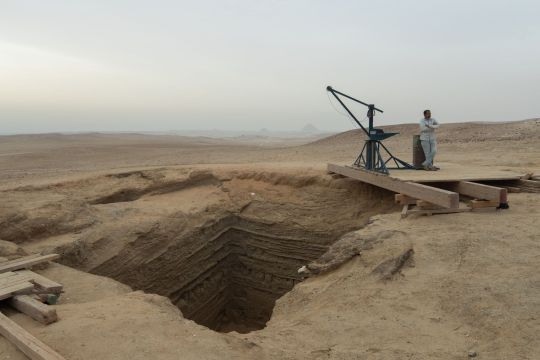
#The Tomb of a Royal Scribe Discovered in Egypt#Abusir Egypt#Dzhehutiemhat#first millennium BC#ancient tomb#ancient grave#ancient artifacts#burial chamber#Czech Institute of Egyptology#archeology#archeolgst#history#history news#ancient history#ancient culture#ancient civilizations#ancient egypt#egyptian history#egyptian art#long reads
277 notes
·
View notes
Text
because babel wasn't what i thought on the surface. i was only intrigued by the royal institute of translation. but then robin held my hand and walk me through his life from calcutta to hampstead then to oxford. and it was lovely, i loved every second of it because he did. he adored the place so did i. until problem ensued. economy, politic, colonialism, sexism, racism, everything that i thought wouldn't find in here. i held on his hand thinking we'd survive it all. but the loses along the way, the grief, he wasn't prepared for that, so did i. and i was angry about it because i felt it too. then we saw the end of it and i just couldn't let it all go.
#noo im still not over it omg#babel an arcane history#babel rf kuang#babel#royal institute of translation#robin swift#ramiz rafi mirza#victoire desgraves#griffin harley
115 notes
·
View notes
Text
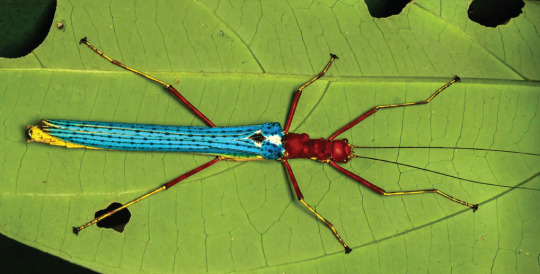



A bright blue stick insect! Stick insects are masters of camouflage, right? Well, our biologists just described a new species that didn't read the manual! #NatureIsTheGreatestShow
Why the wings are so blue and in-your-face remains a mystery for now. Possibly it signals to predators "I'm not tasty!". Indeed, these stick insects secrete a repellent substance.
It is even more fascinating: there are two types of females within this species Calvisia khlongsokana. One with blue wings and one with pale wings. This is not unusual in nature: two different types could increase the chances of survival when conditions suddenly change.
Together with colleagues our taxonomist Jérôme Constant and 'citizen scientist' Joachim Bresseel described this blue stick insect from Thailand and Myanmar. They regularly travel to Southeast Asia to find new species. It's an insect heaven that slowly reveals its secrets.
[Watch the mini documentary we made about their work]
#nature is the greatest show#naturalsciencesbrussels#insects#stick insects#entomology#taxonomy#thailand#myanmar#royal belgian institute of natural sciences
430 notes
·
View notes
Text



craaazy that some of you are so determined he stays within the mould when the entire show is chronicling him breaking out of it
#it fills in when he takes the role of crown prince after erik's death#and slowly becomes more rough until it's entirely not in the lines anymore#like season 3's logo#young royals#yr s3 spoilers#spoilers#no one yell at me i'm tagging everything#young royals season 3 spoilers#as someone who has grown up working class w a monarchy that sucks the living daylights out of my country#and has caused so much systemic oppression and created the class system that only widens the wealth gap as time moves on#i'm really exhausted by having to explain that wille being a queer king isn't a progressive thing#and that yah this is a tv show but it presents you an opportunity to#rewire your thinking about real life situations and the actual class system#the people at the top are still oppressive even if they're gay#imperialism is still imperialism even if you let gay people go to war#go read red white and royal blue if you want your gay royal fantasy#this is literally a show about the class system#and how historical systems that are held up by institutions like the monarchy#are a bad thing#and can never be progressive#even if you rainbow wash it
185 notes
·
View notes
Text

Rachel Corrie (April 10, 1979 – March 16, 2003)
«Rachel, who came to Rafah to stop the tanks. We remember her with love and honour as an inspiration.»
«This has to stop. I think it is a good idea for us all to drop everything and devote our lives to making this stop. I don't think it's an extremist thing to do anymore. I still really want to dance around to Pat Benatar and have boyfriends and make comics for my coworkers. But I also want this to stop.»
– Rachel Corrie, excerpt from an email to her parents [in My Name is Rachel Corrie, taken from the writings of Rachel Corrie, edited by Alan Rickman and Katharine Viner, with the permission of the Corrie family, in collaboration with the Royal Court Theatre International Department, Theatre Communications Group, New York, NY, 2006, pp. 49-50]
(initial quote from: The Only House Left Standing. The Middle East Journals of Tom Hurndall, Foreword by Robert Fisk, Trolley Books, London, 2012)
(image: Rachel, (2009, documentary, 1h 40m), (still), Directed by Simone Bitton, Cinematography by Jacques Bouquin, Edited by Jean-Michel Perez and Catherine Poitevin, Women Make Movies (WMM). Palestine Film Institute)
#book#photography#documentary#rachel corrie#alan rickman#katharine viner#simone bitton#jacques bouquin#jean michel perez#catherine poitevin#the rachel corrie foundation for peace & justice#international solidarity movement#royal court theatre international department#theatre communications group#women make movies#palestine film institute#1970s#2000s
39 notes
·
View notes
Text

"defending civilization against bugs"
lol the mosquito sculpture

---
Sir Ronald Ross had just returned from an expedition to Sierra Leone. The British doctor had been leading efforts to tackle the malaria that so often killed English colonists in the country, and in December 1899 he gave a lecture to the Liverpool Chamber of Commerce [...]. [H]e argued that "in the coming century, the success of imperialism will depend largely upon success with the microscope."
Text by: Rohan Deb Roy. "Decolonise science - time to end another imperial era." The Conversation. 5 April 2018.
---
[A]s [...] Diane Nelson explains: The creation of transportation infrastructure such as canals and railroads, the deployment of armies, and the clearing of ground to plant tropical products all had to confront [...] microbial resistance. The French, British, and US raced to find a cure for malaria [...]. One French colonial official complained in 1908: “fever and dysentery are the ‘generals’ that defend hot countries against our incursions and prevent us from replacing the aborigines that we have to make use of.” [...] [T]ropical medicine was assigned the role of a “counterinsurgent field.” [...] [T]he discovery of mosquitoes as malaria and yellow fever carriers reawakened long-cherished plans such as the construction of the Panama Canal (1904–1914) [...]. In 1916, the director of the US Bureau of Entomology and longtime general secretary of the American Association for the Advancement of Science rejoiced at this success as “an object lesson for the sanitarians of the world” -- it demonstrated “that it is possible for the white race to live healthfully in the tropics.” As Timothy Mitchell writes: “In 1915, the year after the canal’s completion, the newly established Rockefeller Foundation took over the mosquito campaign from the U.S. Army and launched a worldwide program" [...]. The [...] measures to combat dangerous diseases always had the collateral benefit of social pacification. In 1918, George Vincent, president of the Rockefeller Foundation, candidly declared: “For purposes of placating primitive and suspicious peoples, medicine has some decided advantages over machine guns." The construction of the Panama Canal [...] advanced the military expansion of the United States in the Caribbean.
Text by: Fahim Amir. "Cloudy Swords." e-flux Journal Issue #115. February 2021.
---
Richard P. Strong [had been] recently appointed director of Harvard’s new Department of Tropical Medicine [...]. In 1914, just one year after the creation of Harvard’s Department of Tropical Medicine, Strong took on an additional assignment that cemented the ties between his department and American business interests abroad. As newly appointed director of the Laboratories of the Hospitals and of Research Work of United Fruit Company, he set sail in July 1914 to United Fruit plantations in Cuba, Guatemala, Honduras, Costa Rica, and Panama. […] As a shareholder in two British rubber plantations, [...] Strong approached Harvey Firestone, chief executive of the tire and rubber-processing conglomerate that bore his name, in December 1925 with a proposal to conduct an extensive biological and medical survey of the interior region of Liberia. Strong found a receptive ear. Firestone had negotiated tentative agreements in 1925 with the Liberian government for [...] a 99-year concession to optionally lease up to a million acres of Liberian land for rubber plantations. [...]
Nearly all of the [Harvard tropical medicine] department’s expeditions were to industrial plantations in the making. […] [I]nfluenced by the recommendations and financial backing of Harvard alumni such as Philippine governor Gen. William Cameron Forbes and patrons such as Edward Atkins, who were making their wealth in the banana and sugarcane industries, Harvard hired Strong, then head of the Philippine Bureau of Science’s Biological Laboratory, and personal physician to Forbes, to establish the second Department of Tropical Medicine in the United States [...].
Strong and Forbes both left Manila for Boston in 1913. Strong began assembling a team of researchers and a course of instruction to take advantage of the increasing overseas presence of US firms. Forbes became an overseer to Harvard University and a director of United Fruit Company, the agricultural products marketing conglomerate best known for its extensive holdings of banana plantations throughout Central America. […] In 1912 United Fruit controlled over 300,000 acres of land in the tropics [...] and a ready supply of [...] samples taken from the company’s hospitals and surrounding plantations, Strong boasted that no “tropical school of medicine in the world … had such an asset.” “It is something of a victory for Harvard,” he argued. “We could not for a million dollars procure such advantages.”
Over the next two decades, he established a research funding model reliant on the medical and biological services the Harvard department could provide US-based multinational firms in enhancing their overseas production and trade in coffee, bananas, rubber, oil, and other tropical commodities. [...] As the expedition set sail for Monrovia, Strong wrote in his diary that he hoped their efforts would push the United States to “exert a more stimulating influence upon the development of the … country and its people” as it had in the Philippines, Panama, and Puerto Rico. [...] Harvard’s Department of Tropical Medicine was thoroughly entangled in the material relationships – transportation infrastructure, labor regimes, and commodity production – that were instrumental in advancing the interests of firms like United Fruit, Firestone Tire and Rubber Company, and the American Chicle Company as they transformed landscapes across the globe.
Text by: Gregg Mitman. "Forgotten Paths of Empire: Ecology, Disease, and Commerce in the Making of Liberia's Plantation Economy." Environmental History Volume 22 Number 1. January 2017.
#literally that post i made earlier today about frustration of seeing the same colonial institutions and leaders showing up in every story#about plantations and forced labor my first draft i explicitly mentioned the harvard school tropical medicine and kew royal botanic garden#abolition#ecology#imperial#colonial#bugs
80 notes
·
View notes
Text
Being a museum professional in Canada is seeing all of the Young Canada Works postings go up knowing how many smaller institutions would close without this vital funding and feeling really sad about the state of the sector
#almost every museum that is not the Royal ones are hiring right now#the funding is only if youre under 30 and in school/returning to school#and so so so so many institutions need this funding to have staff to be open through the summer months#or they just dont open at all
28 notes
·
View notes
Text
A Good Omens mini-ficlet to celebrate the 200th anniversary of the RNLI
The year is 1824. For once, it's Aziraphale who's received a commendation from Upstairs for something he's only just hearing about -- and Upstairs NEVER hands out commendations, so this must be something really impressive!
So, he and Crowley take a trip to Douglas on the Isle of Man to see what this new "National Institution for the Preservation of Life from Shipwreck" is all about, have a fascinating chat with the founder, Sir William Hillary, then go out for fish and chips (and possibly "fish and chips" *nudge nudge wink wink* -- innuendo inspired by @vidavalor's epic Fish meta)
#good omens#aziraphale#crowley#ineffable husbands#rnli#royal national lifeboat institution#fanfiction
20 notes
·
View notes
Text
As per usual the BRF put on a shambolic display of precedence at Constantine's Service of Thanksgiving 🤡
First let me start out by requesting an answer as to how the FUCK Sarah Ferguson and her nonceband take precedence over A REIGNING KING AND QUEEN?
As much as I enjoy seeing my girl Lady Sarah Chatto take precedence over the play pretend royals that are Pavlos and MC's children, can you even imagine how slighted the BRF – let alone their stans – would've been if the tables were turned and Princess Alexandra of Greece and Nicolas Mirzayantz took precedence over Charles and Camilla?
On to the seating:
How exactly do you have Andrew (a non(ce)-working royal 🤡) take precedence over the Duke of Kent (a working royal)? 🫠 Honest to god, looking at the BRF front row, it looks like he ACTIVELY snatched Edward's seat because it makes zero sense for him to be seated behind the Gloucesters but ahead of the Kents 🙃
This is also just to say: Make no mistake, the next time Harry attends a BRF function and is seated five rows down "because hEs nOt a wORkiNG rOyAL DUH", remember how these weirdos are clearly more willing to let a sexual predator back in the fold than a man addressing the racism his wife endures 🫶
And then we return to Sarah, live-in (non-royal) divorcee – the only one of her kind that apaz assumes the precedence of her (royal) child at an official function – let alone takes precedence over her 🤡 Are we supposed to take this as a sign she and the Duke of Nonce have remarried? Because I dare you to name another royal family where she wouldn't be placed bang last.
On the... family(?) side, we have Alexia, Theodora and Olympia taking precedence over their younger brothers (except for Pavlos taking precedence over Alexia - we can't let the plebs know what they've missed out on by honouring actual birth order) which is... fair... though not exactly reflected in the primogeniture the GRF observes but whatevz 🤪 But then... the spouses of Constantine's children (all aside from ✨ Marie thee Chantal ✨ obvs) take precedence over Odysseus and Aristides? What does that even mean? 😭
Princess Alexandra of Greece (second cousin) and Alexander of Yugoslavia (first cousin once removed) take precedence over Elena, Cristina, Gustav and Alexandra (nieces and nephew) – but somehow not over Felipe and Letizia (thereby honouring Felipe's position as reigning monarch – a position that would since be shat on by Lord 4th on I'm a Celeb 2022) who take precedence over JC and Benedikte (brother- and sister-in-law). Queen Noor (unrelated 🤪) takes precedence over both Gustav and Alexandra (nephew and niece)... but NOT over Elena and Cristina (nieces).
And don't even get me started on the precedence somehow afforded to Chantal Miller... 🤡
#this is not a serious institution#biggest royal family in the world and i can't remember when they've last put on a respectable observance of basic precedence#this the royal family yall ride for?#how are you not embarrassed#british royal family#text
18 notes
·
View notes
Text
Azula in the mental institution 🤡

#atla#princess azula#atla azula#azula fanart#royal fire family#ty lee#tyzula#mai atla#ursa#zuko#mental institution#mental instability#mental issues#mental illness#schizophrenia#hallucinations
170 notes
·
View notes
